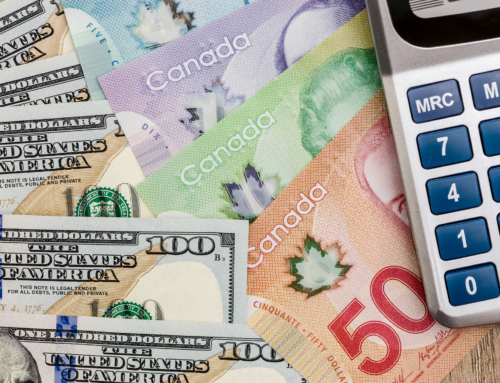In the May 2015 edition of the STEP Journal, David A. Altro, Managing Partner and Florida Attorney & Canadian Legal Advisor at Altro LLP, and Heela Donsky, Associate and Ontario Lawyer at Altro LLP, published an article featured in the “US and Canada” section of the journal. In the article they explain when a Canadian resident can defer capital gains tax on the sale of US property.
To read the article you can either see below or click here to view it on the Society of Trust and Estate Practitioners website or click below to download a PDF of the article.
Many Canadians are excited to learn that sellers of US real estate are able to defer capital gains tax (CGT) resulting from the sale if they purchase similar real estate within a prescribed period and subject to certain conditions (a like-kind exchange). But can a Canadian-resident seller of US real estate take advantage of this US tax deferral and is there any benefit in doing so?
Section 1031: like-kind exchange
A Canadian resident can achieve a tax-efficient deferral of CGT consequences on the sale of US real estate, but only in very limited circumstances
Section 1031 of the US Internal Revenue Code (the Code) provides that a taxpayer who is selling US real estate that is held for ‘productive use in a trade, business, or for investment’ may exchange it on a rollover basis for similar US real estate that is also held for productive use in a trade, business, or for investment.
To obtain the rollover, the replacement property must be identified within 45 days of the sale, and the transaction to acquire the identified replacement property must close within 180 days of that initial sale. If the sale is to a related person, both parties need to hold their respective properties for no less than two years to maintain the deferral. Real estate located within the US must be exchanged for real estate in the US to qualify. Where the sale meets those requirements, the capital gain or loss is not recognised until a future disposition that is not a like-kind exchange. To the extent the replacement property is valued at less than the original property, some gain may be taxable on the portion of proceeds that are not like-kind property.
As qualifying properties are required to have a business or investment purpose, the ability for owners of personal-use real estate to take advantage of the rollover is eliminated. It is possible, however, for certain personal property (non-real estate) to qualify for the exchange, but real property and personal property are not considered like-kind.
Individuals, corporations, partnerships, limited liability companies and trusts may take advantage of the rules in s1031 of the Code. However, certain assets, including stocks, bonds, interests in a partnership (subject to special rules) and certificates of trust or beneficial interests, are generally excluded from qualifying for the exchange.
A like-kind exchange must be reported to the US Internal Revenue Service (IRS) on Form 8824, along with the tax return for the year in which the exchange took place. In addition, if the exchange is not simultaneous (on the same day) and/or any cash or mortgage boot (where the mortgage on the sold property is larger than the price of the replacement property) is received, the US Foreign Investment in Real Property Tax Act will generally require the buyer to remit 10 per cent of the gross purchase price (in USD) to the IRS as a withholding tax on non-US sellers of US real estate. The withholding is not a tax per se, but rather an amount withheld to apply against the tax on the net capital gain.
A Canadian who owns US real estate meets the definition of a US taxpayer under the Code. Accordingly, if a Canadian seller of US real estate that is held for business or investment purposes meets the foregoing conditions, they may obtain the rollover under s1031 of the Code.
But does this do any good for the Canadian seller? What, if any, are the tax consequences that would apply to the transaction in Canada?
The cross-border tax problem
Pursuant to the Canadian Income Tax Act (ITA), a Canadian resident is subject to tax on worldwide income, including capital gains realised outside of Canada. Generally, when a capital gain is triggered by the sale of US real estate, the Canadian seller will report and pay tax on the gain to the IRS in the US. They will also need to report and pay tax on the gain to the Canada Revenue Agency (CRA). However, as a result of having reported and paid tax to the IRS on the sale, the Canadian is able to take advantage of foreign tax credits to eliminate double taxation. The net tax result should be the same amount of tax as if the Canadian seller sold Canadian real estate and paid CGT in Canada only (not including provincial taxes that may apply in addition to the federal rate).
One challenge around the foreign tax-credit system is that the system only works where the disposition is recognised on both sides of the border at the same time. Where there is a mismatch of certain events, such as the timing of a disposition occurring on different sides of the border, double taxation can result.
Accordingly, an s1031 like-kind exchange gives rise to an incongruence of taxable events on both sides of the border. It is, therefore, of little use to a Canadian seller of US real estate because the deferral only occurs on the US side, while tax will be levied on the gain on the Canadian side on the actual sale. This leads to a scenario where there is no foreign tax credit to deduct against the tax payable in Canada. And, when the US tax is ultimately due, the taxpayer will pay tax again. The only way to solve this conundrum is for a Canadian seller of US real estate to obtain similar deferral treatment in Canada and avoid the double taxation issue of a like-kind exchange. Is this possible?
Section 44: exchange of former business property
Section 44 ITA carves out an election for a deferral of capital gains recognition in respect of the voluntary disposition of a ‘former business property’.
Section 248(1) ITA provides that ‘former business property’ means capital property, including foreign capital property such as US real estate, which was used by the taxpayer mainly for the purpose of ‘gaining or producing income from a business’ and that was real property or an interest in real property. Unlike the American version of the replacement property rules, in Canada ‘former business property’ does not include rental property. The property must be used primarily to generate qualified business income.
In addition to the foregoing requirement, in order to qualify for an s44 exchange, it must be reasonable to conclude that the replacement property is being acquired to replace the former property. The CRA takes the position that there must be a correlation or causal relationship between properties subject to the disposition. The replacement property must be used in the same or a similar business and must be acquired for a use similar to the use of the former property. The replacement property must generally be purchased within one year after the end of the taxation year in which the former property is sold.
Accordingly, a Canadian s44 exchange is much narrower in its application than the US s1031 like-kind exchange. Nonetheless, where the requirements of s44 are met and a deferral is realised in Canada, the transaction should generally qualify for the more broadly available deferral in the US. These deferrals would achieve the same result on both sides of the border at the same time, thereby avoiding double-taxation concerns. When the individual subsequently disposes of US real estate that is not eligible for any such deferral, the capital gain (loss) will ultimately be realised.
Canadian safeguards: FAPI, Form T1135 and Form 5013
Why not set up a US corporation to own your US rental property so that you can take advantage of s1031 in the US, which includes sale of rental property? If a US corporation (USCo) that is controlled (more than 50 per cent of the voting shares) by a Canadian corporation (CanCo) or persons related to a CanCo, sells US real estate, taking advantage of the like-kind exchange in the US, there should be no tax triggered in Canada since there was no activity in Canada. Right? Wrong. The USCo would be considered a ‘controlled foreign affiliate’ and the foreign accrual property income (FAPI) rules would apply to deem FAPI earned by the CanCo as taxable to the CanCo on an accrual basis. This results in the same mismatch as to timing discussed earlier. Moreover, such a structure would mean that the USCo would eventually be paying CGT on its assets at the US federal CGT rate of 35 per cent or higher, depending on the amount of net gain (not including state taxes that may apply in addition to the federal rate).
Adding one or more entities in between the CanCo and USCo in an attempt to break the chain of FAPI would probably be caught by the requirements of Canada’s Form T1135 (Foreign Income Verification Statement). This form requires Canadian-resident individuals, corporations, partnerships and certain trusts to report US real estate holdings (among other things, but not including personal-use real estate) with an aggregate cost of more than CAD100,000 (about USD80,000) held at any time in a year. Such cost may be adjusted for improvements and includes the value of any outstanding mortgage.
Where a Canadian partnership holds an interest in a USCo, it will be required to file CRA Form 5013 to report the gain. The USCo would then be subject to Canadian tax on the gain.
Conclusion
A Canadian resident may be able to achieve a tax-efficient deferral of CGT consequences on the sale of US real estate in very limited circumstances, where the seller is able to obtain a deferral in both Canada and the US at the same time. The exchange rules allow for deferral of tax – not avoidance. Given the complexities facing a Canadian-resident owner of US real estate, they may be better off satisfying the CGT at the time of disposition to ensure the efficient use of foreign tax credits.






